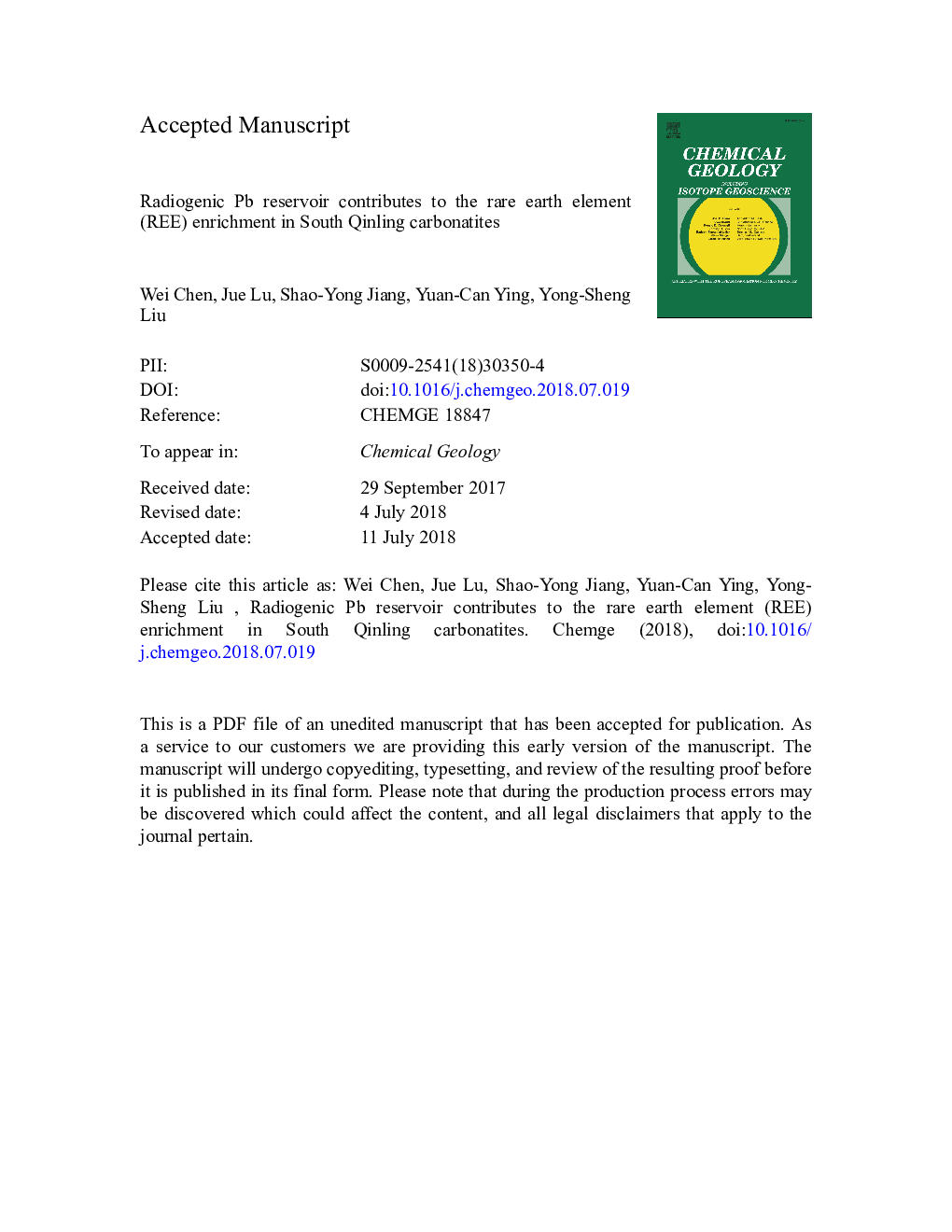| Article ID | Journal | Published Year | Pages | File Type |
|---|---|---|---|---|
| 8910119 | Chemical Geology | 2018 | 49 Pages |
Abstract
Carbonatite and related alkaline silicate rocks contain one of the most significant rare earth element (REE) reserves in the world. It is well-known that these REE deposits are characterized by a strong light REE enrichment with a steep fractionation from La to Lu in the chondrite-normalized diagram. However, the origin of their REE enrichment remains debatable. The Shaxiongdong (SXD) carbonatite in the South Qinling orogenic belt hosts one of the most important REE deposits in central China. In this study, in situ chemical and isotopic data have been obtained for carbonate minerals from the complex. Our results show that calcite has variable trace element abundances, especially REEs. In situ Pb isotope data for calcite reveal extreme variations of 206Pb/204Pb (18.05-31.71) and 207Pb/204Pb (15.49-16.36) ratios. Interestingly, Pb isotope variations display positive correlations with REE enrichments [i.e., (La/Yb)N and (La/Nd)N]. Calcite with extreme radiogenic Pb isotopic compositions displays upper mantle C and O isotopic compositions (δ13Cavgâ¯=â¯â5.74â°, δ18Oavgâ¯=â¯7.13â°) and depleted 87Sr/86Sr isotopic ratios (~0.7030). The observed various REE enrichments accompanying the variable Pb isotopic composition within SXD calcite possibly result from a closed-system metasomatic event. The U-bearing mineral (i.e., pyrochlore) accumulating abundant uranogenic lead since their Silurian formation serves as the radiogenic Pb and LREE source for the metasomatism. Alternatively, the chemical and isotopic composition observed might suggest involvement of two mantle sources (PREMA and the distinct radiogenic Pb mantle reservoir).
Keywords
Related Topics
Physical Sciences and Engineering
Earth and Planetary Sciences
Geochemistry and Petrology
Authors
Wei Chen, Jue Lu, Shao-Yong Jiang, Yuan-Can Ying, Yong-Sheng Liu,
